
The Breed History
First breed records date to the 1700s in Britain. The extinct
wire-haired Black and Tan Terrier may have been the wirehaired
breed progenitor. Originally, the smooth and wire fox terriers were
considered a single breed with AKC recognition in 1885. In 1984,
they were split in the AKC registry. Normal Rockwell depicted this
breed in some of his paintings.
Breeding for Function
As their name implies these were originally bred for fox hunting
and excelled at going to ground (following their quarry into the
burrow). They were also successfully used as small game hunters,
and to clear vermin.
Physical Characteristics
Height at Withers: Less than 15.5" (39.5 cm)
Weight: male 18 lb (8 kg), female 16 lb (7 kg)
Coat: The dense, tough wiry non-curly hairs produce the effect of
a broken coat, and overlay a dense soft undercoat. Outer coat hairs
are sometimes a bit wavy. The overcoat length and texture varies
over the surface of the dog, being between 0.5-1.5" long, and softer
in texture on the sides and underside. The coat is mostly white
with well-demarcated color patches. Brindle and red-liver are not
favored as the second color. Markings on white are usually black
and tan. A pure white dog is also acceptable. Ginger and white dogs
can produce both tri-color and ginger colored offspring, whereas
tri-color dogs bred together will only produce tri-color puppies.
Longevity: 13-14 years.
Points of Conformation: An alert expression, high head and tail
carriage, and sturdy square athletic build characterize this breed.
The back is short, the gait is a springy ground-covering stride, and
the head has a measured standard length of 7-7.25". Small round
darkly colored eyes are fairly close and deep set, with an intense
expression. The top of the folded ear should be above skull level;
ears are medium leathered, triangular and hang forward. The skull
is of defined width between the eyes and shows minimal stop, the
nose is black, neck moderately long and fine and not throaty. The
topline is level. The thorax is deep and oval in cross section, and
the caudal ribs are deep. The tail (if docked) is 3/4 of the natural
length. It is high set and thick. Limbs are straight, metatarsals and
metacarpals heavy and short, feet small and compact and pads
tough. The toes are moderately arched. In body type in all respects
they are the same as the Smooth Fox Terrier.
Recognized Behavior Issues and Traits
Traits attributed to this breed include: These are diggers, can
be snappy, may not tend to get along with other dogs, and are
especially likely to have inter-male aggression. Though loyal, these
dogs are not demonstrative; instead, rather reserved.
Like lots of attention and mentally stimulating activities, good
alarm barkers, high trainability but early obedience training is
recommended.
Have high energy and high exercise needs, good with children,
and have moderate grooming needs. The breed has a low shedding
tendency.
Normal Physiologic Variations
None reported
Drug Sensitivities
None reported
Inherited Diseases
Hip Dysplasia and Legg-Calve Perthes Disease: Polygenically
inherited traits causing degenerative hip joint disease and arthritis.
OFA reports 4.6% affected.
Patella Luxation: Polygenically inherited laxity of patellar
ligaments, causing luxation, lameness, and later degenerative joint
disease. Treat surgically if causing clinical signs. Too few Wire
Fox Terriers have been screened by OFA to determine an accurate
frequency.
Elbow Dysplasia: Polygenically inherited trait causing elbow
arthritis. Too few Wire Fox Terriers have been screened by OFA to
determine an accurate frequency.
Primary Lens Luxation (PLL): An autosomal recessive gene causes
primary lens luxation. Homozygous affected dogs usually develop
lens luxation between 4-8 years of age. Rarely, heterozygous
carriers can develop lens luxation, but at a later age. Lens luxation
can lead to secondary glaucoma and blindness. A genetic mutation
has been identified, and a genetic test is available.
Disease Predispositions
Persistent Pupillary Membranes: Strands of fetal remnant
connecting; iris to iris, cornea, lens, or involving sheets of tissue. The
later three forms can impair vision, and dogs affected with these
forms should not be bred. Identified in 33.96% of Wire Fox Terriers
CERF examined by veterinary ophthalmologists between 2000-2005.
Cataracts: Posterior subcapsular progressive cataracts predominate
in the breed. Unknown mode of inheritance. Identified in 7.55% of
Wire Fox Terriers CERF examined by veterinary ophthalmologists
between 2000-2005.CERF does not recommend breeding any Wire
Fox Terrier with a cataract.
Hypothyroidism: Inherited autoimmune thyroiditis. 4.2% positive
for thyroid autoantibodies based on testing at Michigan State
University. (Ave. for all breeds is 7.5%).
Primary (Narrow Angle) Glaucoma: Ocular condition causing
increased pressure within the eyeball, and secondary blindness due
to damage to the retina. Diagnose with tonometry and gonioscopy.
Can also predispose to lens luxation. Dorn reports a 5.47x odds
ratio versus other breeds. Diagnosed in 2.28% of Wire Fox Terriers
presented to veterinary teaching hospitals.
Pulmonic Stenosis: Suspected polygenic mode of inheritance. The
breed is reported with a higher than expected frequency of the
disorder. Affected dogs present with exercise intolerance, stunting,
dyspnea, syncope and ascites, due to a malformed pulmonic valve,
stricture of the right ventricular outflow tract or stricture of the
pulmonary artery.
Demodicosis: Overgrowth of demodex mites in hair follicles
due to an underlying immunodeficiency. Causes hair loss and
inflammation. Also associated with sebaceous gland hyperplasia in
this breed.
Cystinuria/Cystine Bladder Calculi: Wire Fox Terriers have an
increased risk for developing cystine bladder stones due to a defect
in cystine metabolism. Treat with surgical removal and life-long
medical therapy. Unknown mode of inheritance in this breed.
Megaesophagus: Wire Fox Terriers are overrepresented in
diagnoses of primary megaesophagus. Onset can be at weaning, or
in adulthood. Clinical signs include regurgitation, excess salivation,
and aspiration pneumonia.
Allergic Inhalant Dermatitis, Brachygnathism, Cerebellar
Hypoplasia, Deafness, Epilepsy, Lissencephaly, Mitral Valve
Disease, Oligodontia, Prognathism, Retinal Pigmented Epithelium
Dystrophy, and von Willebrand's Disease are reported.
Isolated Case Studies
Ectopic Ureter: Urinary incontinence was associated with an
ectopic ureter in a 5-month-old, male Wire Fox Terrier. The dog
regained urinary continence after transplantation of the ureter
from the urethra into the urinary bladder.
Multiple Cardiac Anomalies: A 7-week-old Wire Fox Terrier was
admitted with pulmonary atresia, with intact ventricular septum.
The right ventricle and tricuspid valve were hypoplastic, and venous
return to the right atrium reached the left side through an atrial
septal defect. Oxygenation was via hyperplastic bronchial arteries.
There was no evidence of ductus arteriosus.
Aortic Body Tumor: An aortic body tumor in a 7-year-old
wire-haired fox terrier with hind limb ataxia is described. A
metastatic lesion in the dorsal arch of the eighth thoracic vertebra
caused compression of the spinal cord.
Genetic Tests
Tests of Genotype: Direct test for PLL is available from OFA and the
Animal Health Trust.
Tests of Phenotype: CHIC Certification: Required testing
includes cardiac and patella evaluations.
Recommend hip and elbow radiographs, CERF eye examination, and
thyroid profile including autoantibodies.
Miscellaneous
- Breed name synonyms: Wire-haired Fox Terrier, Fox Terrier,
Wire Fox
- Registries: AKC, UKC, CKC, KCGB (Kennel Club of Great Britain),
ANKC (Australian National Kennel Club), NKC (National Kennel Club)
- AKC rank (year 2008): 90 (708 dogs registered)
- Internet resources: American Fox Terrier Club: www.aftc.org
Wire Fox Terrier Association (UK):
www.wirefoxterrierassociation.co.uk
The Fox Terrier Club (UK): www.thefoxterrierclub.co.uk
Photo Gallery of Breed - Wire Fox Terrier - Dog Breed
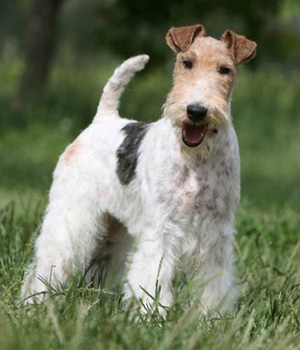

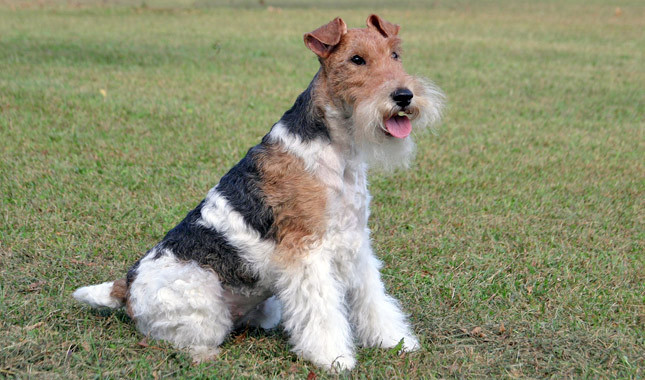
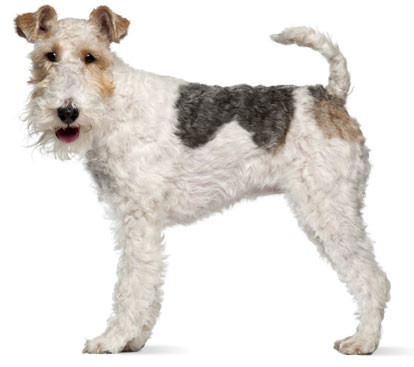
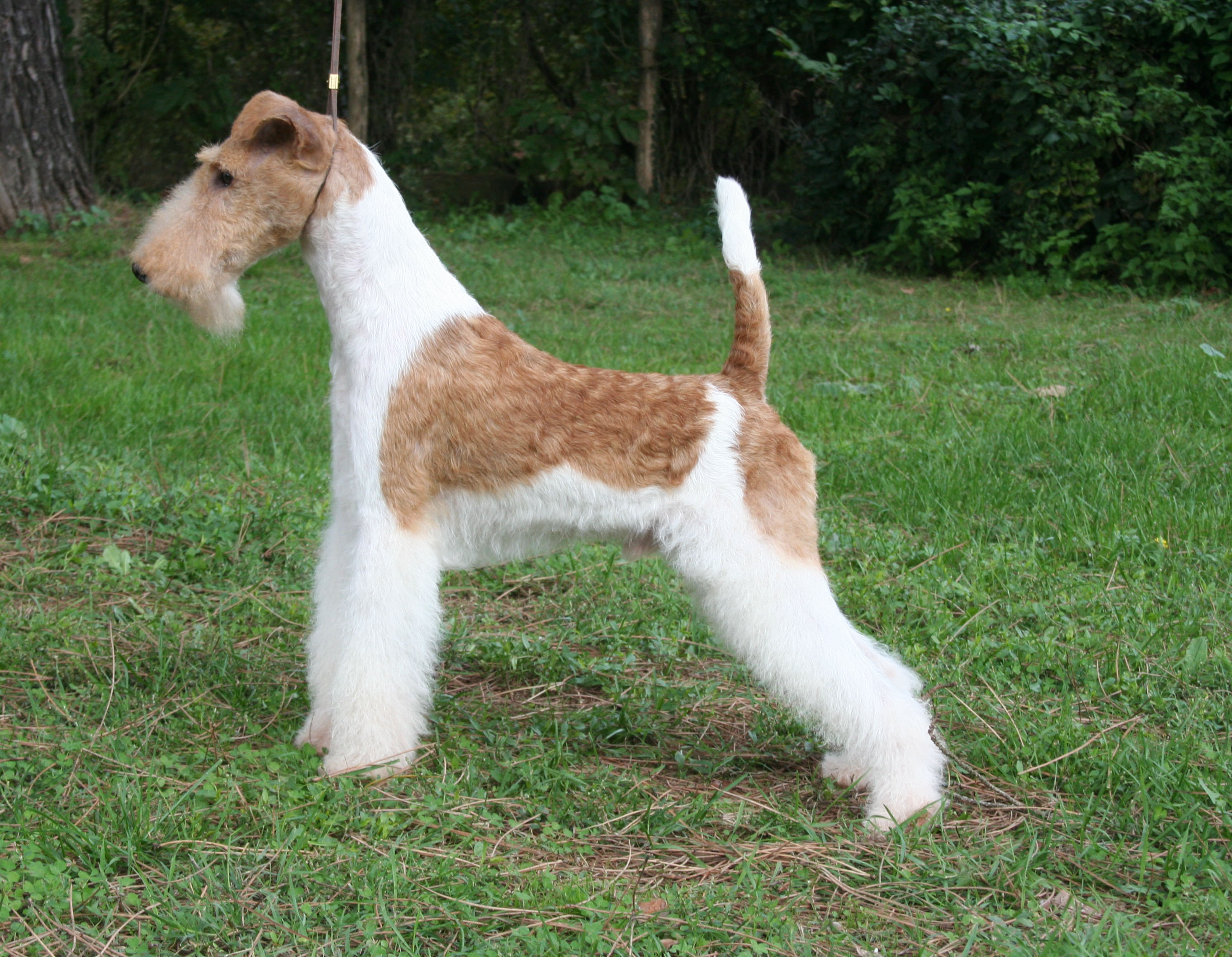
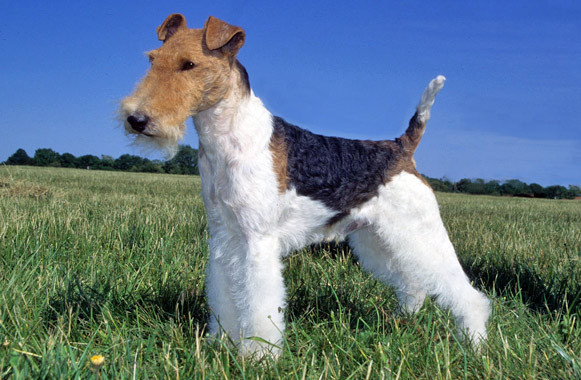

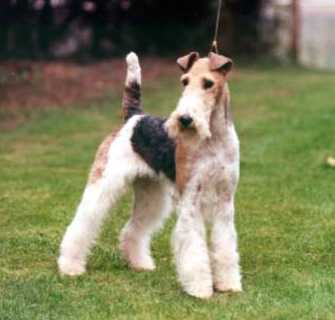
 Animalia Life
Animalia Life